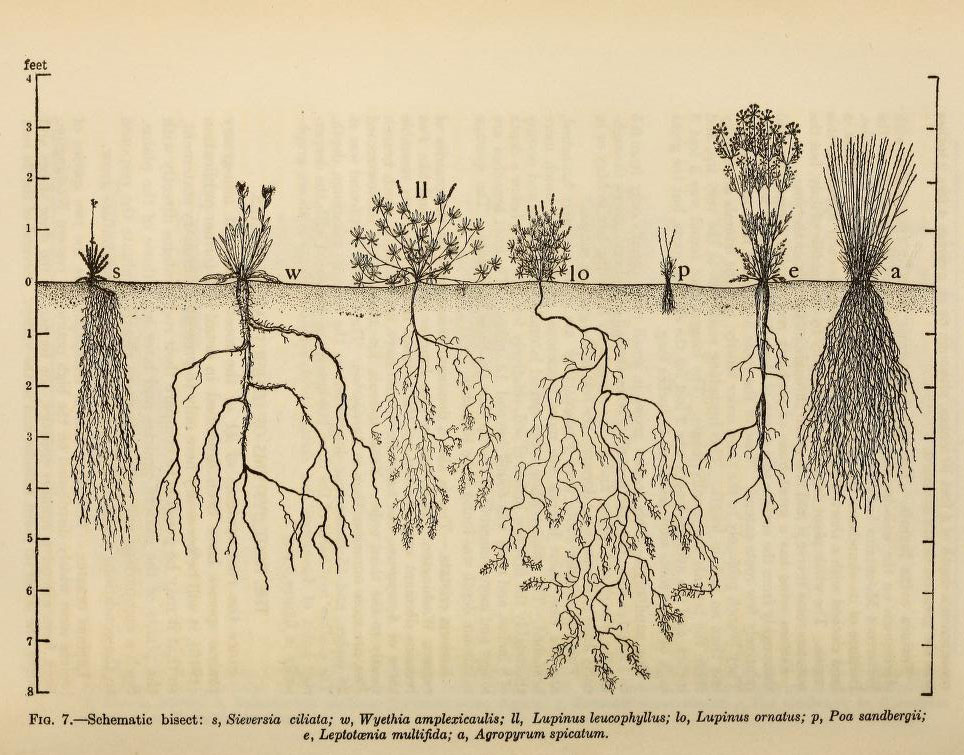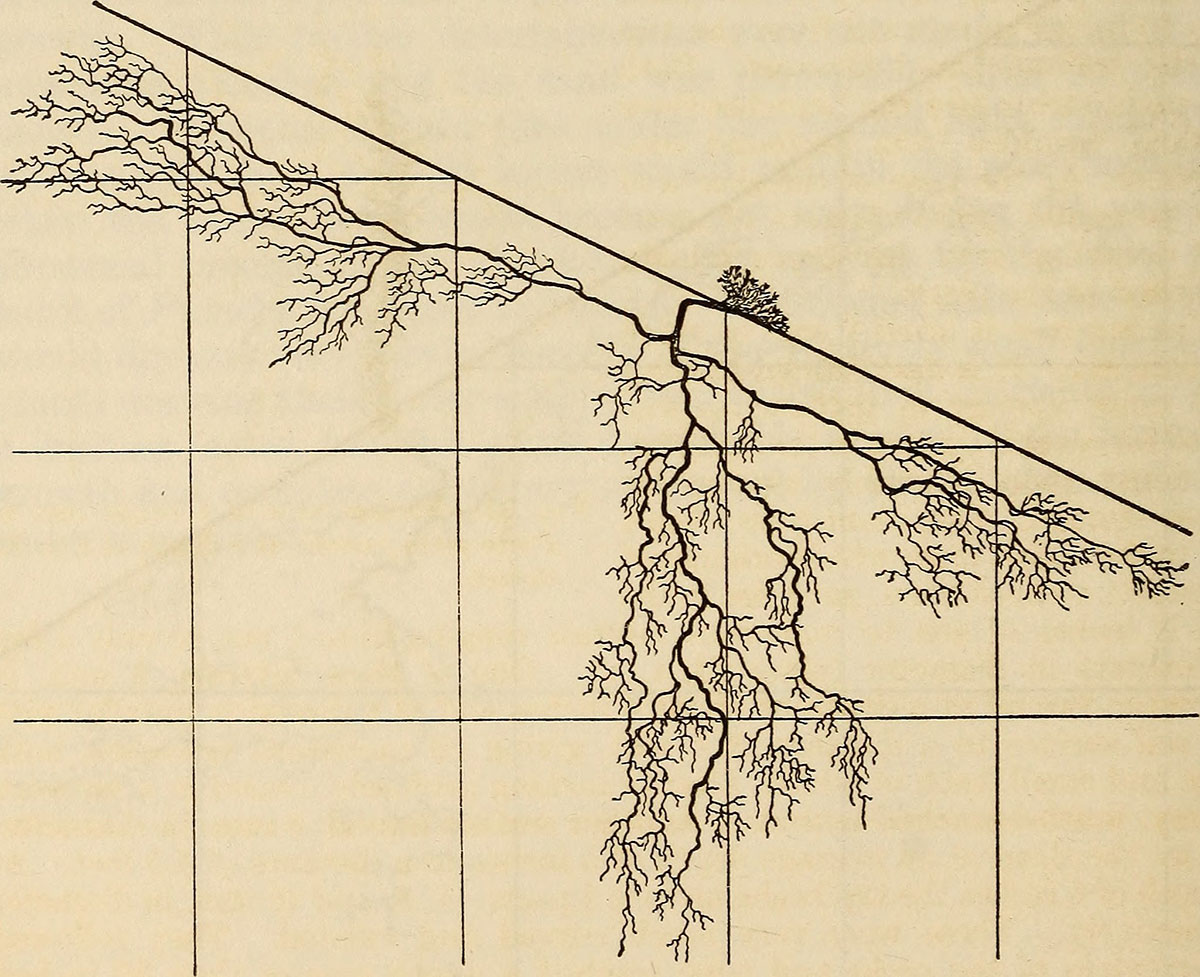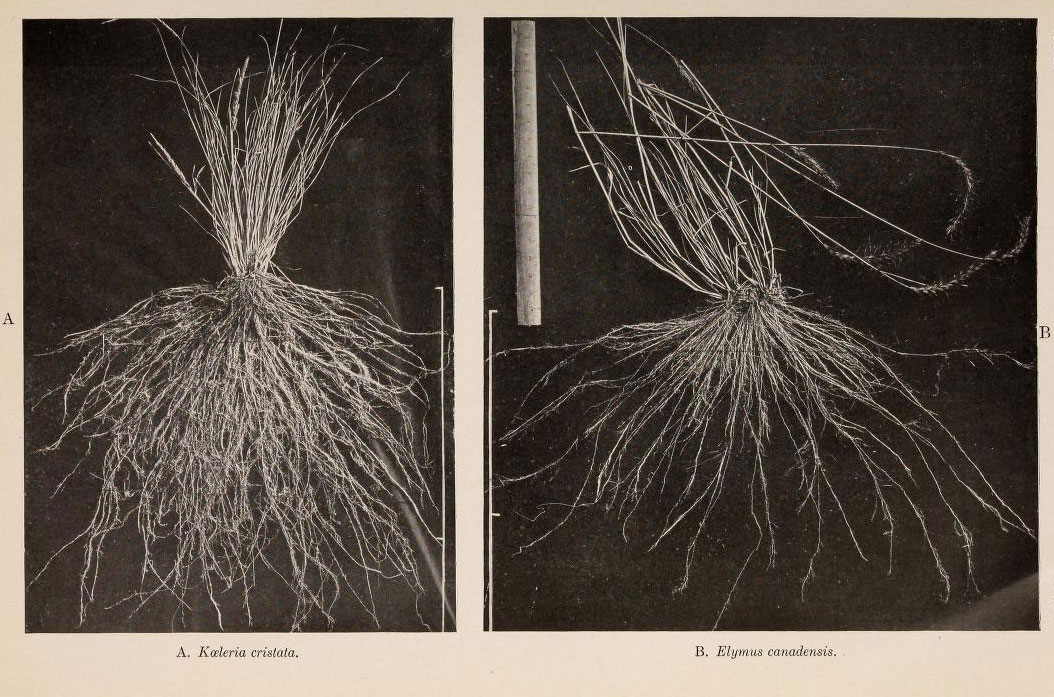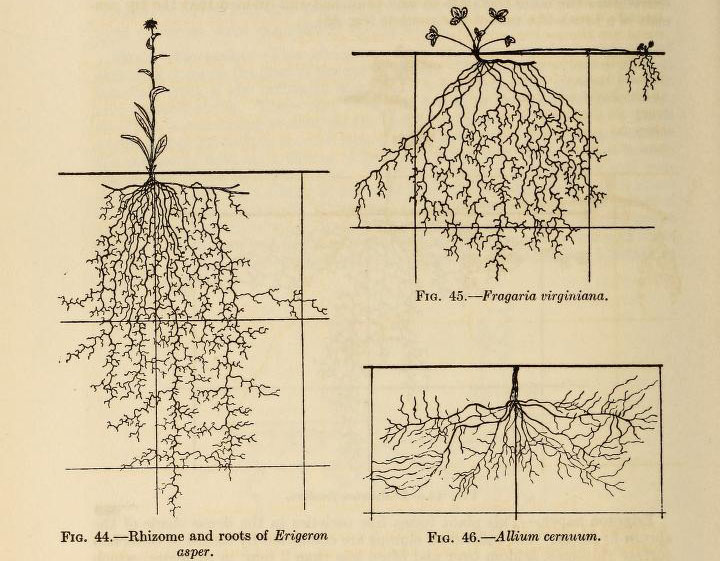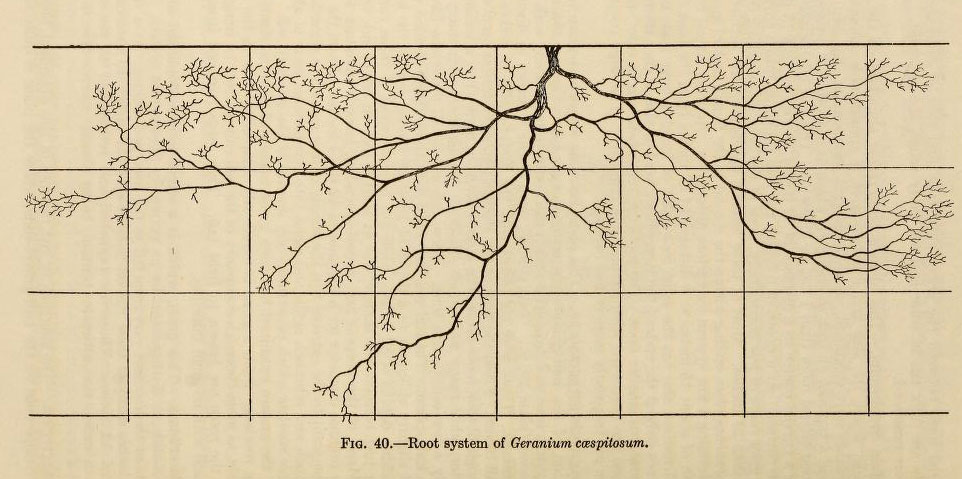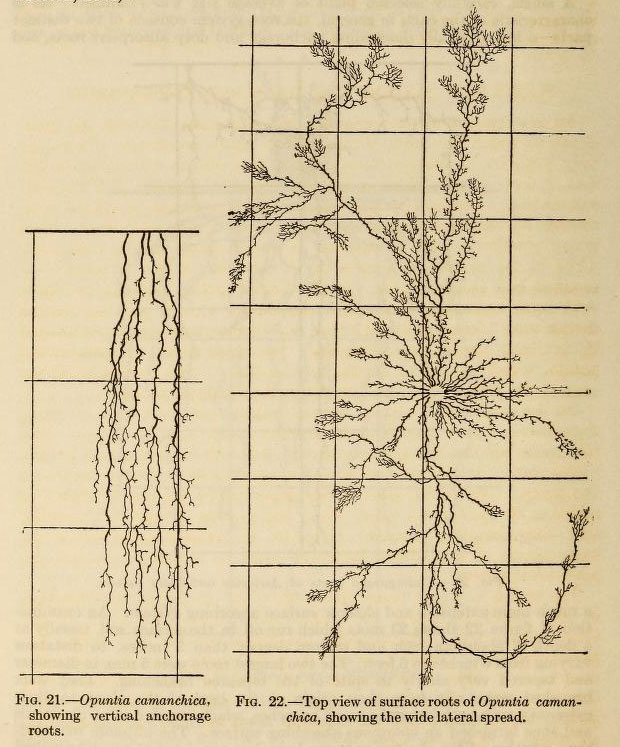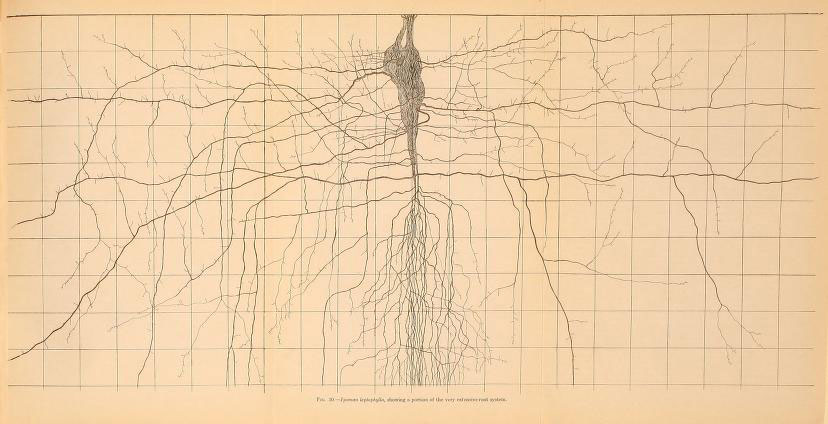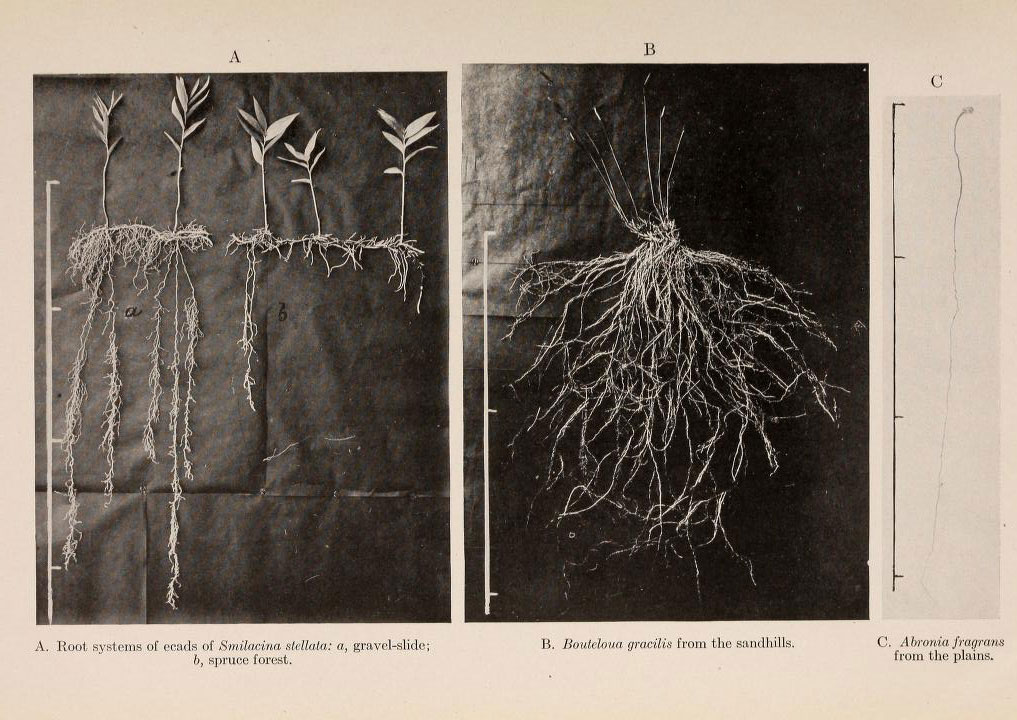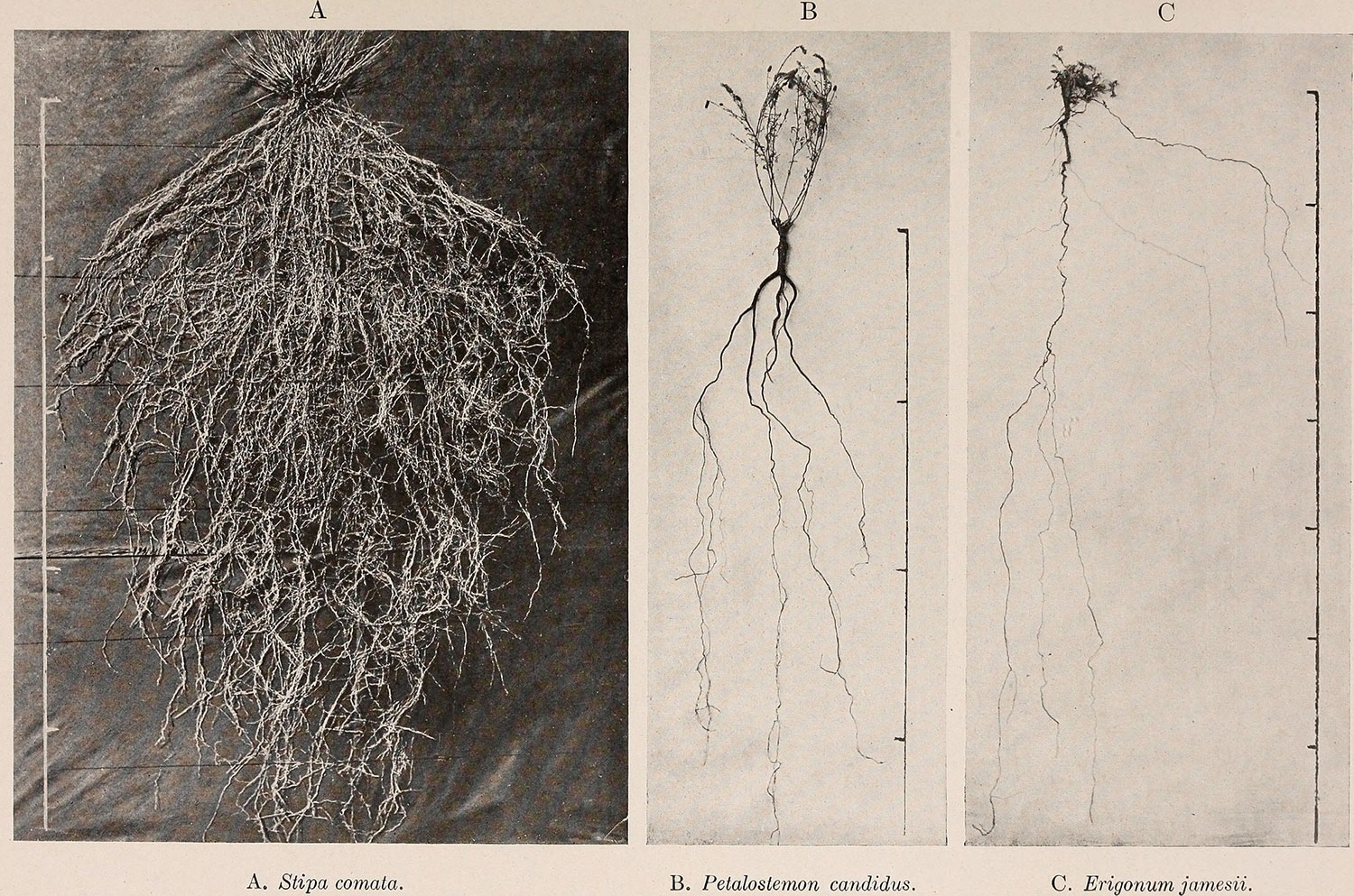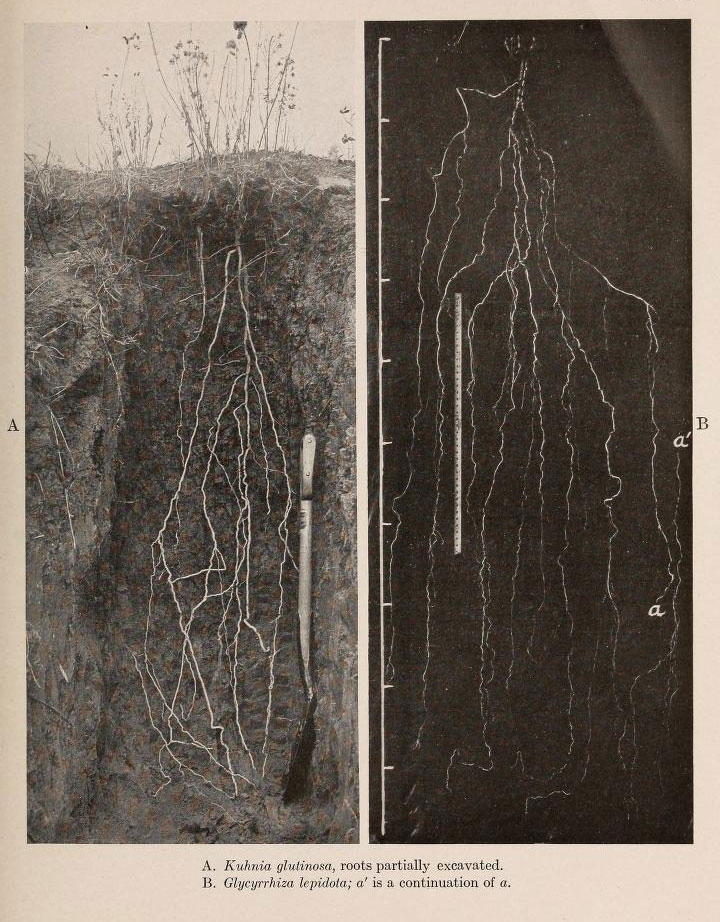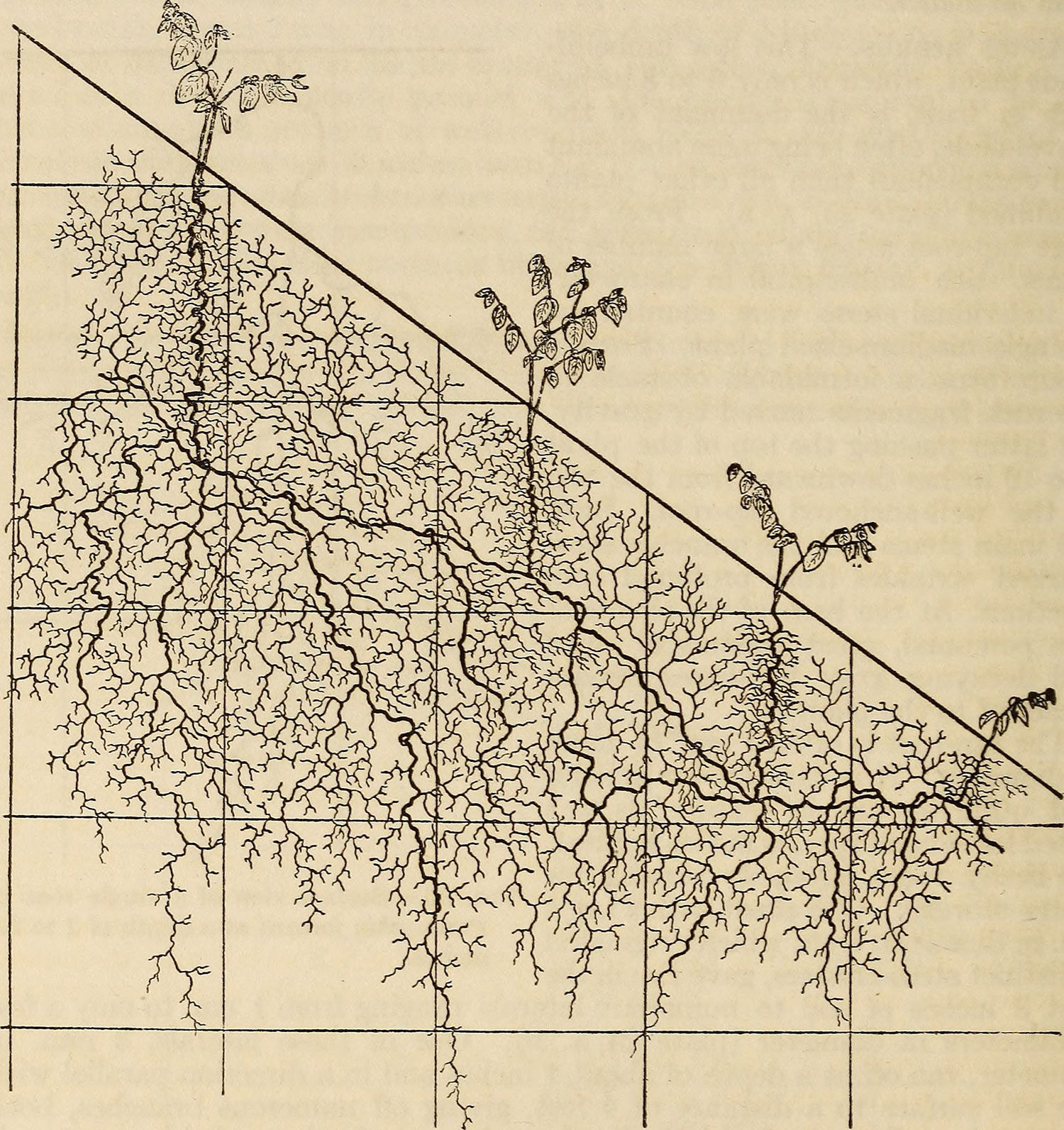Although considerable progress has been made in the study of root systems of desert plants (Cannon, 1911, 1913; Markle, 1917), very little information is available concerning the roots of other native species. During 1914 the writer investigated the root systems of the prairie plants of southeastern Washington, where the annual precipitation is only 21.6 inches and occurs mostly in the period of rest: Since that time it has been planned to make a comparative study of the roots of prairie plants growing in a more humid region and where the precipitation occurs mostly during the season of plant growth. The opportunity for such study came during the fall of 1917 and work was carried on vigorously until the soil b~came frozen in December. The study was resumed early in the following spring. In June 1918 the field of investigation was extended to the Great Plains and sandhill region of Coloraoo, while later in the summer a large number of plants were excavated and examined in various habitats about Pike’s Peak in the Rocky Mountains.
A knowledge of root distribution and root competition under different natural conditions is not only of much scientific value, but it also finds practical application in a better understanding of the value of plants as indicators for distinguishing lands of grazing value only from those with possibilities of crop production. It will result in a more intelligent solution of the ecological probleins of grazing and will likewise be of great aid to the forester in selecting sites for afforestation. Moreover, a knowledge of root distribution will throw a flood of light upon many of. the problems of plant succession. Indeed, the phenomena of ecesis, competition, and reaction can not be completely, if indeed correctly, interpreted without a knowledge of the extent, position, and relation of the root systems of the plants.
Shantz has given us an excellent example of the value of a knowledge of root distribution in his study of the natural vegetation of the Great Plains as an indicator of the capabilities of land for crop production (1911). Sampson (1914, 1917) has made a study of root systems of many range plants in considering their life history, forage value, and the natural revegetation of range lands; while foresters are just beginning to study the roots of plants as indicators of conditions of soil moisture on various sites (Korstian, 1917).
This paper contains descriptions of the character, depth, and distribution of the roots of about 140 species of plants. These include shrubs, grasses, and other herbs, a few of the latter being noxious weeds. It represents the results of the examination of approximately 1,150 individual plants in 8 different communities, as follows: prairies of eastern Nebraska, chaparral of southeastern Nebraska, prairies of southeastern Washington and adjacent Idaho, plains and sandhills of Colorado, the gravel-slide, the half-gravel-slide, and forest communities of the Rocky Mountains of Colorado.
171 pages
